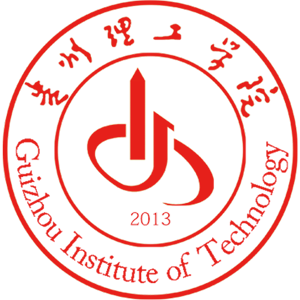详细信息
Study on mechanical properties and application of cement-based materials with different properties under impact load ( SCI-EXPANDED收录 EI收录) 被引量:4
文献类型:期刊文献
英文题名:Study on mechanical properties and application of cement-based materials with different properties under impact load
作者:Wu, Shaokang Zhang, Junwen Xu, Youlin Song, Zhixiang Zhang, Yang Dong, Xukai Zeng, Banquan Wang, Shiji Xing, Chaorui Bai, Xuyang Zhang, Suilin Li, Xian Xu, Weizheng
第一作者:Wu, Shaokang
通信作者:Zhang, JW[1]
机构:[1]China Univ Min & Technol Beijing, Sch Energy & Min Engn, Beijing 100083, Peoples R China;[2]Guizhou Inst Technol, Sch Min Engn, Guiyang 550003, Peoples R China
第一机构:China Univ Min & Technol Beijing, Sch Energy & Min Engn, Beijing 100083, Peoples R China
通信机构:corresponding author), China Univ Min & Technol Beijing, Sch Energy & Min Engn, Beijing 100083, Peoples R China.
年份:2025
卷号:464
外文期刊名:CONSTRUCTION AND BUILDING MATERIALS
收录:;EI(收录号:20250517773860);Scopus(收录号:2-s2.0-85216077075);WOS:【SCI-EXPANDED(收录号:WOS:001421832100001)】;
基金:This study was supported by the National Natural Science Foundation of China (grant nos. U23B2093, 52034009) , the National Key R & D Program of China (grant no. 2022YFC3004602) and the Fundamental Research Funds for the Central Universities ( Ph.D. Top Innovative Tal-ents Fund of CUMTB) (BBJ2024002) .
语种:英文
外文关键词:Cement-based materials; Roadway support; Rock burst; Dynamic rupture; Toughness; Anti-flushing energy
摘要:This study thoroughly investigates the mechanical properties and fracture behavior of cement-based materials with varying compositions (either single or mixed with different types and contents of fibers and rubber) under impact loading, with particular emphasis on their theoretical applications in roadway support, rock burst prevention, and related fields. To systematically examine the mechanical response and fracture mechanisms of these materials under impact, dynamic compression tests were conducted using a separated Hopkinson pressure bar (SHPB) system. The entire process of crack initiation, propagation, and penetration was captured using highspeed camera technology. Scanning electron microscopy (SEM) analysis was employed to further elucidate the deformation and failure mechanisms of cement-based materials with different compositions. The results show that the residual strain of cement-based materials incorporating rubber and polypropylene fibers is significantly higher than that of the control group (without fiber or rubber), with steel fiber showing the second-highest residual strain. However, when the steel fiber content reaches a certain critical threshold, a "strain rebound" phenomenon occurs, indicating that the material's strain response exhibits nonlinear characteristics. The incorporation of different types and amounts of rubber, steel fiber, and polypropylene fiber influences the dynamic peak compressive strength, peak strain, and dynamic deformation modulus to varying extents. Notably, steel fibers enhance the compressive strength and dynamic elastic modulus, while rubber and polypropylene fibers significantly improve the peak strain of the material. The combination of two types of fibers and rubber notably enhances the material's toughness, ductility, and impact resistance. Excessive inclusion of rubber and polypropylene fibers, however, leads to a reduction in the material's strength, which accelerates compression failure. A proper amount of steel fiber helps delay compression failure. A proper amount of steel fiber helps delay compression failure and improves the material's impact resistance. The inclusion of steel fiber, polypropylene fiber, and rubber in different specimens has a notable impact on the time to compression failure of the materials. Steel fibers form an internal network structure that helps prevent crack propagation, thus maintaining the material's integrity for a longer period. In contrast, rubber and polypropylene fibers, due to their flexibility and ductility, result in a shorter failure time under compression impact. Thanks to the unique physical properties of rubber, steel fiber, and polypropylene fiber, they effectively inhibit crack growth, particularly when used in combination. The two- or three-component composites exhibit excellent synergistic effects, leading to enhanced energy absorption and impact resistance. The failure modes of all specimens are primarily characterized by tensile shear composite cracks and coplanar tensile cracks, with almost no shear cracks observed, indicating that the material's failure mechanism is mainly tensile. Analysis of the interaction mechanisms between the different fibers and rubber in cement-based materials reveals that an optimal combination can generate a "1 + 1 > 2" synergistic effect, significantly improving the overall performance of the material. The study summarizes the application of these materials in various areas of coal mines, proposing the optimal mixing ratios and construction strategies to maximize the performance of cement-based materials. A comprehensive analysis of the cost performance of the material is carried out, and the remarkable effect of the developed high toughness cement-based composite material in the treatment of coal mine floor heave is verified, and its great application potential and economic benefits in practical projects are proved. The practical significance and potential applications of the mechanical properties of cement-based materials under impact loading are briefly discussed, providing a foundation and reference for future research.
参考文献:
![]() 正在载入数据...
正在载入数据...


